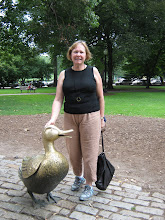I still use books to teach my under eights the parts of a good-for- research non-fiction book. The Usborne Beginners series of books is perfect for teaching Year 1 about headings, contents, glossaries and indexes. I have enough of these for each child to have their own book to look at. The photographs are good, the contents page well set out, there are fact boxes, labels, large font and just the right amount of information for them to read. Pebble Plus is another series of non-fiction books that you could also use to do the same sort of activities with young students.
 In the library we always have Non-fiction Monday. This means that if you come to the library for your take-home readers, that on Monday you must take a non-fiction text. Some of the most popular 'readers' are the National Geographic titles and any of those authored by Seymour Simon.
In the library we always have Non-fiction Monday. This means that if you come to the library for your take-home readers, that on Monday you must take a non-fiction text. Some of the most popular 'readers' are the National Geographic titles and any of those authored by Seymour Simon.
The other thing that has happened to non-fiction books is that many of them have become 'works of art' and just like fiction picture books they are hard to resist. Illustrators like Steve Jenkins and Ed Young have shown readers that illustrations can certainly enhance the factual text.




No comments:
Post a Comment